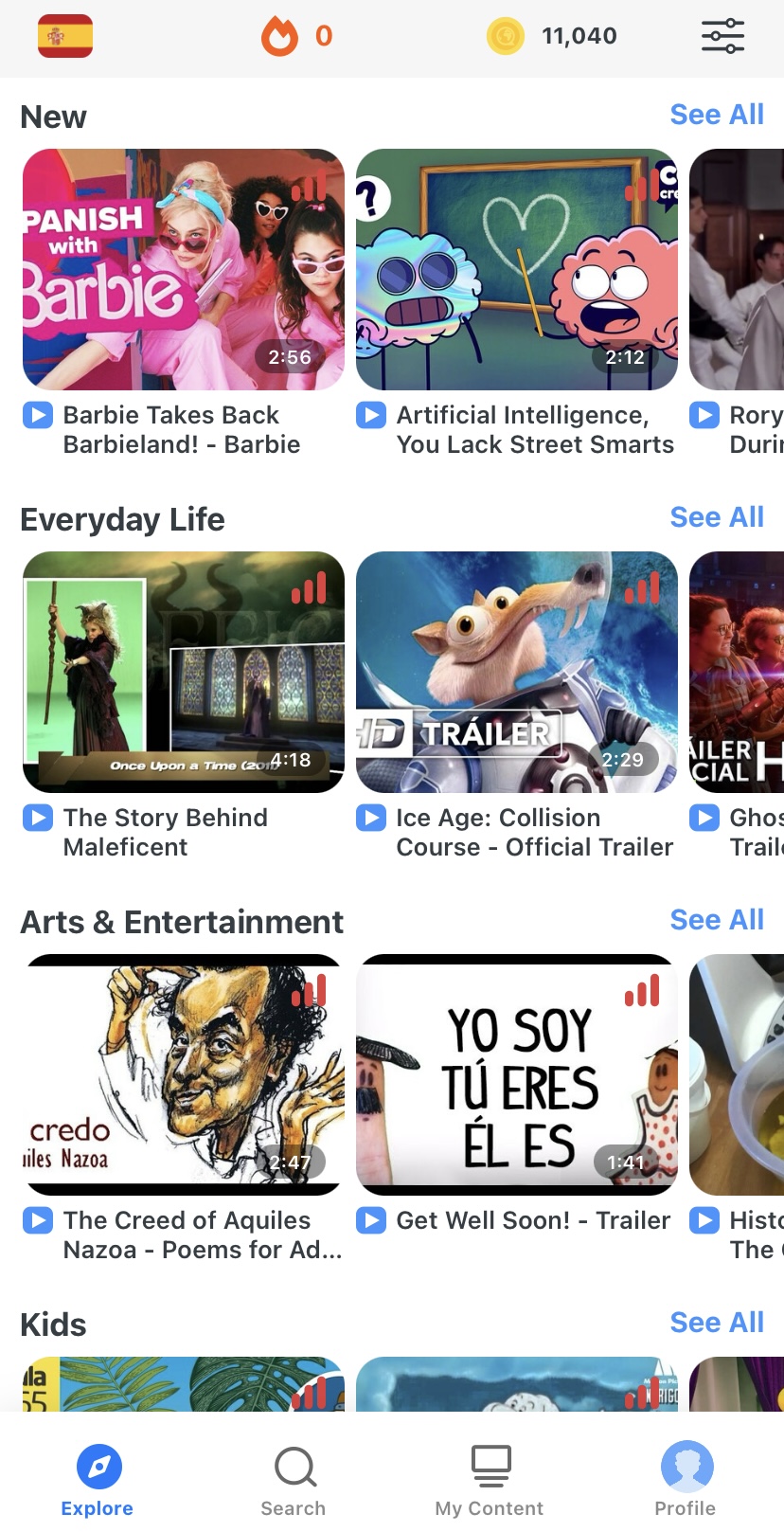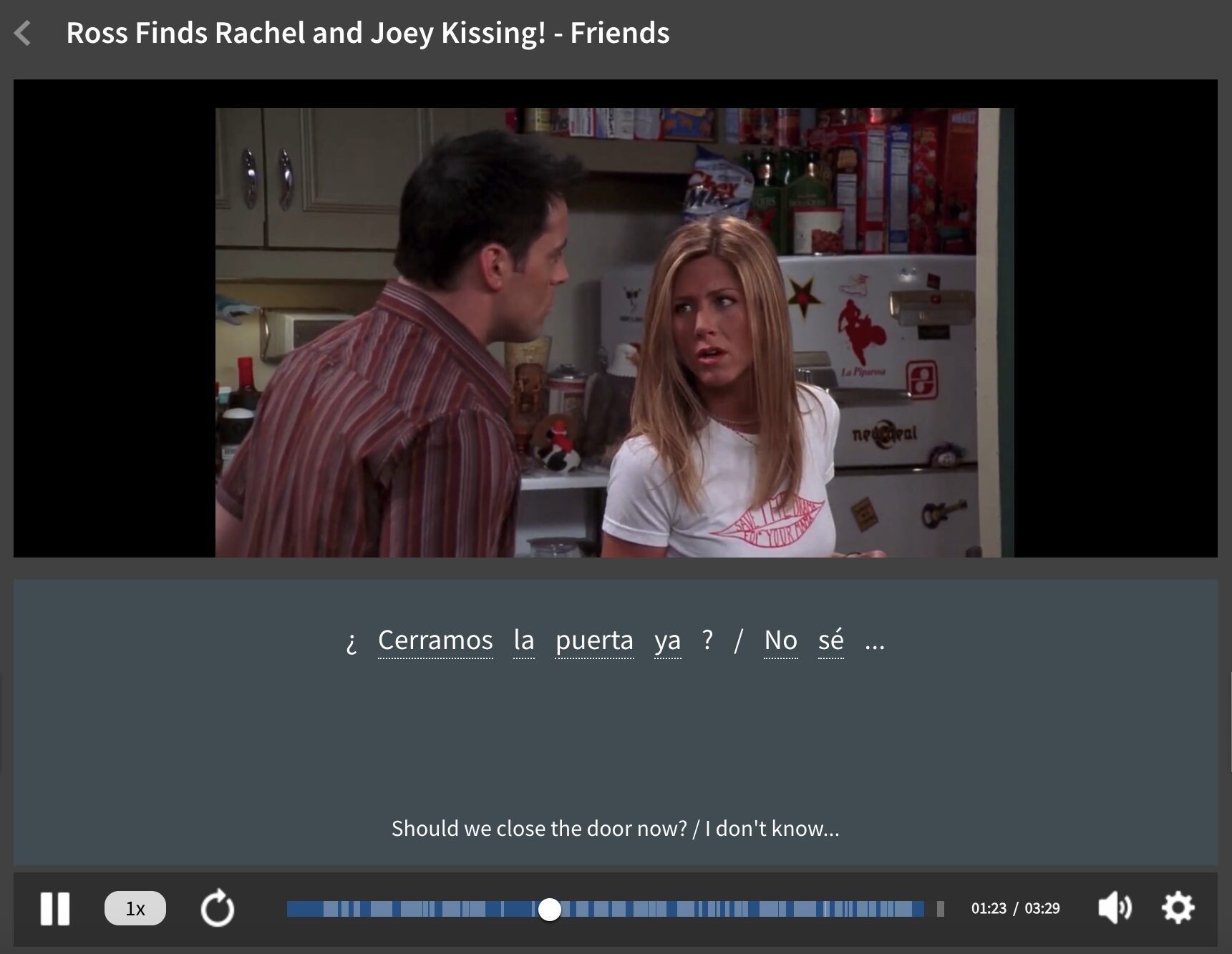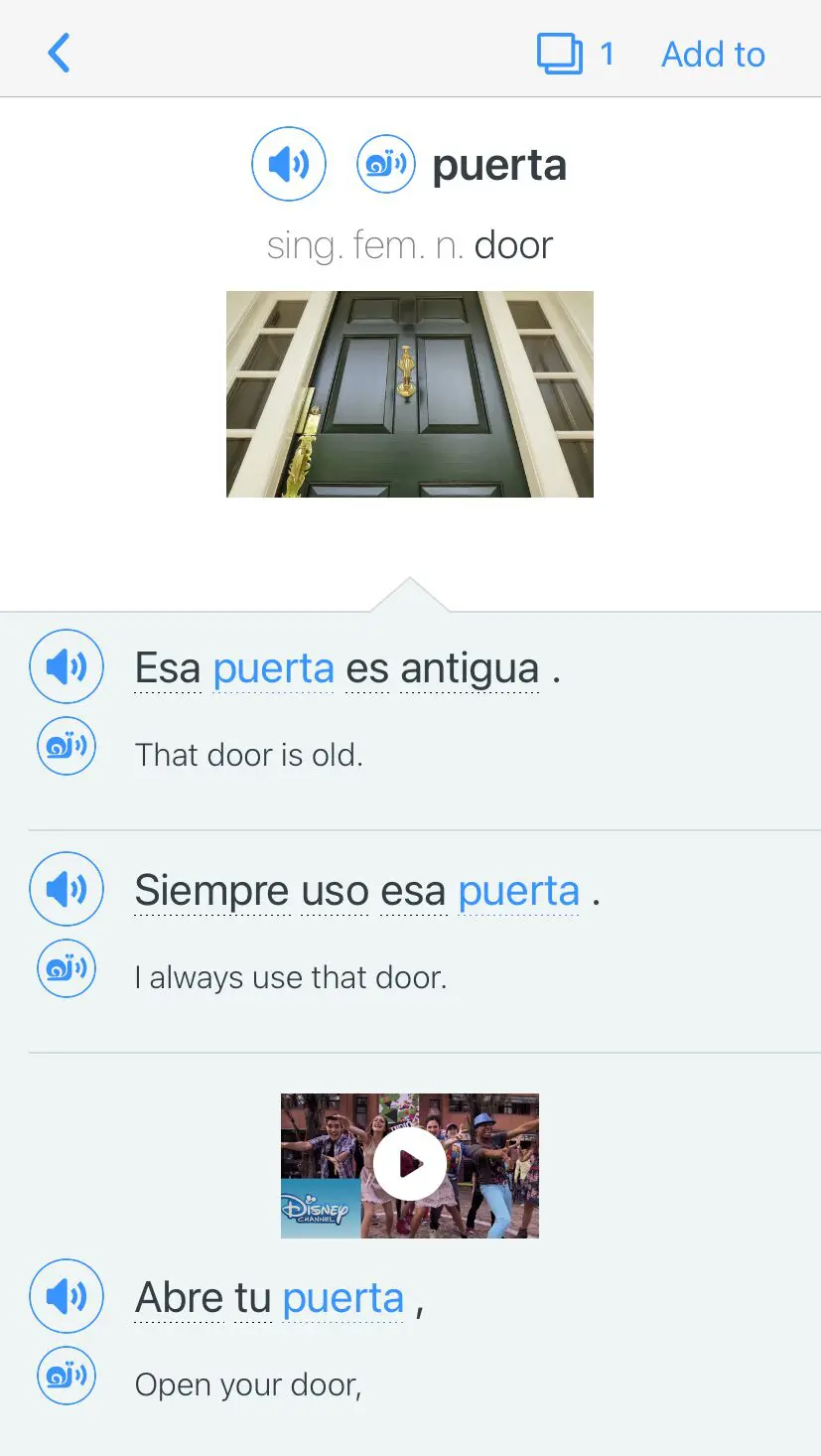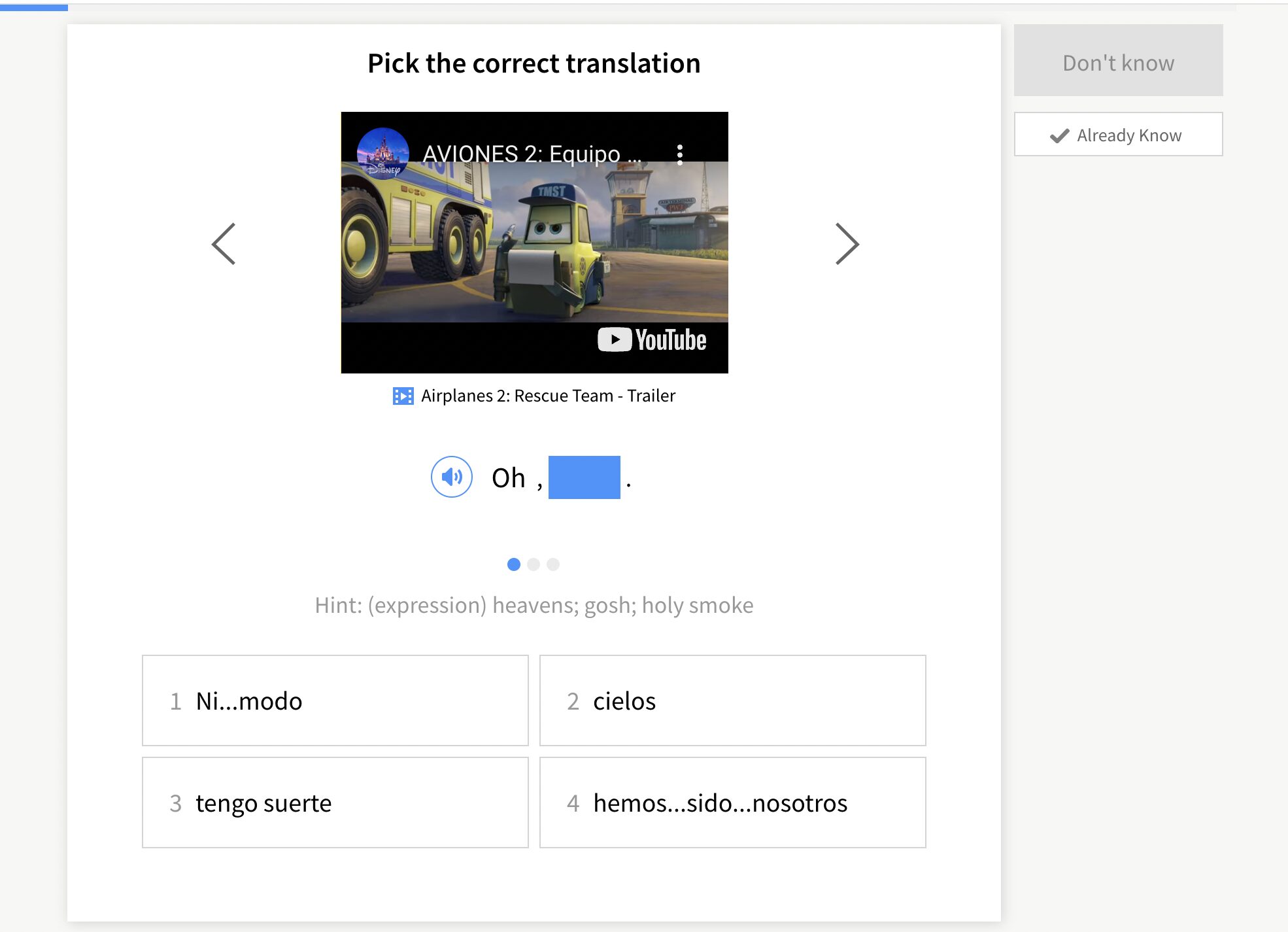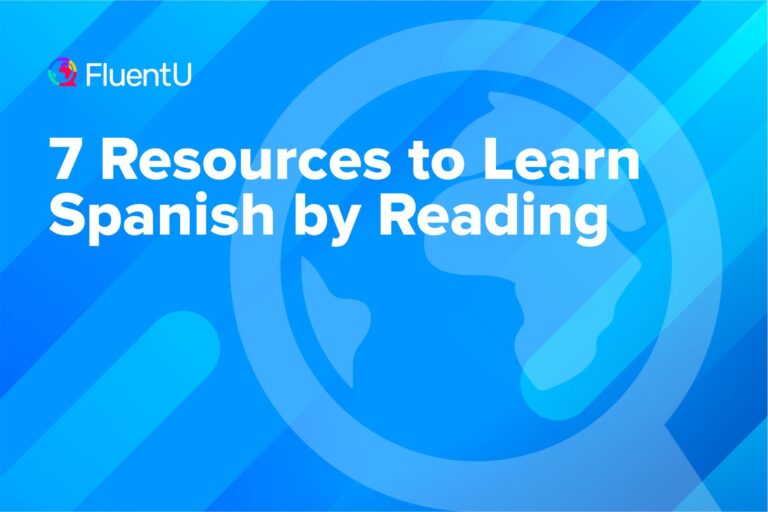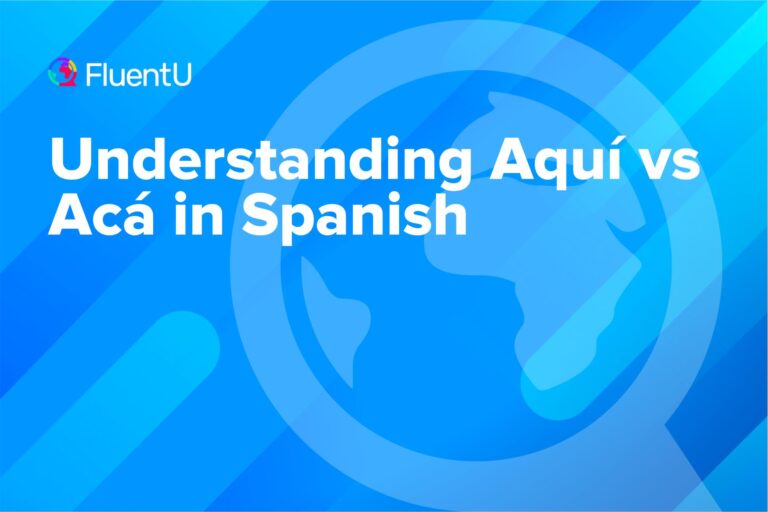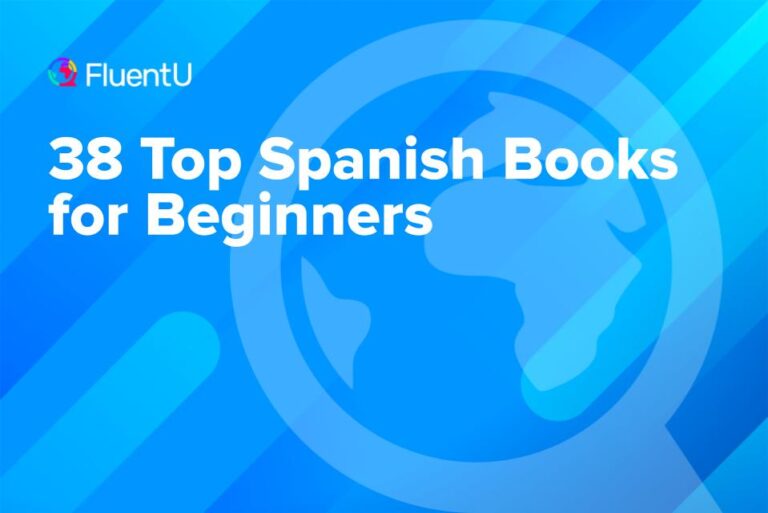Contents
- 1. Build on What You Already Know
- 2. Use Flashcards (Seriously)
- 3. Put Your New Vocab Into Action
- 4. Set Yourself Some Personal Vocabulary Goals
- 5. Utilize Ready-made Vocabulary Lists
- 6. Use Apps for Learning Spanish
- 7. Focus on Core Words
- 8. Watch Videos That Immerse You in Spanish Vocabulary
- 9. Answer Vocab-related Quizzes
- 10. Get a Study Buddy
- And One More Thing…
The 10 Best Ways to Learn Spanish Vocabulary (From a Language Learner)
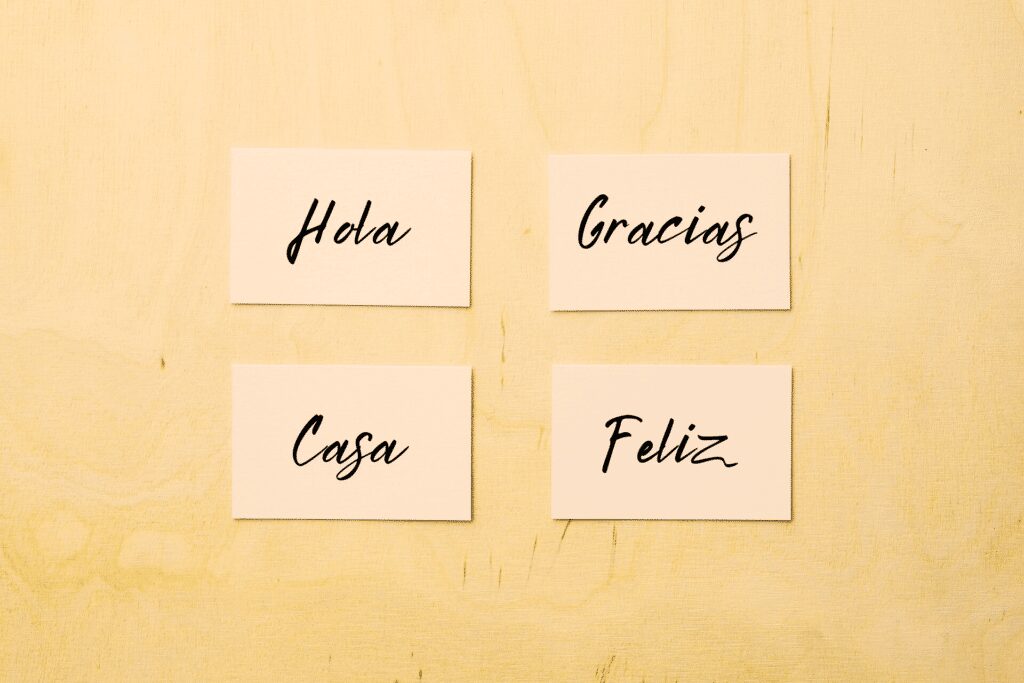
Many people have the basics of Spanish down, but when it comes to actually using the language, they find themselves at a loss for words. That’s because new learners often make the mistake of focusing on grammar way more than they should on vocabulary.
Lucky for you, the best ways to learn Spanish vocabulary are all in this post. Some of them you may have heard of (like using flashcards), while others might surprise you. Read on to master vocabulario de Español once and for all.
Download: This blog post is available as a convenient and portable PDF that you can take anywhere. Click here to get a copy. (Download)
1. Build on What You Already Know
Instead of trying to learn Spanish from scratch, why not start with the Spanish you encounter on a daily basis?
Not only will it give you a head start in your studies, but you’re also more likely to recall vocab you’re often exposed to.
For example:
- Food-related words. Driving down the street, you might’ve come to know the restaurant El Pollo Loco , which is actually Spanish for “the crazy chicken.” You might’ve also encountered other useful food words like salsa (sauce), queso (cheese) and carne asada (roasted meat).
- Surnames. Try to find out the meaning of the Spanish names of people you know—coworkers, friends and family. For example, the last name Castillo is Spanish for “castle,” while the last name Guerra means “war.”
- Place names. For example, Nevada roughly translates to “snow-covered,” and Colorado means “colored red.”
- Everyday household items. On things like shampoo bottles and food, you’ll find Spanish ingredient lists, instructions and advertisements. Some appliances even come with instructions in Spanish for you to skim through.
- Loanwords. As its name suggests, a loanword is a word “borrowed” by one language from another with very slight changes (or sometimes no change at all). Llama , iguana , mosquito , pronto and cafetería are just a few of the many English words that were loaned from Spanish.
- Cognates. Cognates are words in different languages that look and sound very similar. In Spanish, most English words that end in -al and -ble won’t be any different, and most English words ending in -tion will simply change to -ción in Spanish. For example:
| -al | -ble | -tion (-ción) |
|---|---|---|
| natural natural | terrible terrible | habitation habitación |
| national nacional | horrible horrible | manifestation manifestación |
CAVEAT: While cognates make learning new vocab much easier, be careful not to let false cognates trip you up. These are words that look very similar from one language to another but actually mean something entirely different, like molestar (to annoy) and asistir (to attend).
2. Use Flashcards (Seriously)
I know, I know: flashcards sound like a lot of work. They’re also so high school and old-fashioned. But they keep popping up in lists along the lines of “best way to learn Spanish vocabulary” for a reason: they’re an easy and efficient way to learn vocabulary.
And there are only two ways to make them, really:
- The old-fashioned way. Using index cards and a Spanish dictionary, write down all the Spanish words you want to learn on the index cards by hand. Then, flip the cards over and write the English translation of each Spanish word on that other side.
- Online flashcard apps. Of course, creating physical flashcards by hand can be tedious and time-consuming, especially if you’re going to do this for hundreds or thousands of palabras . You can save yourself a ton of time and effort by investing in Spanish flashcard apps. Many of these (like Anki) have extra features like timers, multimedia options and the ability to synchronize with multiple devices, all to make learning as easy as possible for you.
Not sure which words to put in your first flashcards? Going off of Tip #1, start with the words that are most relevant to you, like things you see and discuss on a daily basis.
Once you have these words, put them into your flashcard decks, and separate them thematically. I suggest learning words related to each other, as opposed to picking out random Spanish words you see that you’re probably not going to use anyway.
For example, on the first week, you can pick kitchenware as a topic. So you’ll study words like cucharas (spoons), platos (plates), un horno (an oven) and cocinar (to cook). Once you’ve got all of these words down, choose a new topic and keep going!
3. Put Your New Vocab Into Action
In other words, use the words you’ve learned in context. Learning Spanish words in isolation is a surefire way to forget about them soon after you’ve picked them up. Reading, hearing and saying words in sentences as early as possible will help guide you to fluency all the more quickly.
Here’s how you can master the skills I mentioned above, respectively:
- Pick up a book at your level. Even if you’re itching to pick up novels by Miguel Cervantes right now, you’re better off starting with Spanish books for beginners—at least, for the time being. You can also visit e-stories, a website with countless readings of Spanish poetry, plays and stories under categories such as horror and satire.
- Listen to short audio files in Spanish. Take your pick between podcasts for Spanish learners, bite-sized audiobooks and anything else Spotify can throw at you.
- Get a tutor. Find a Spanish tutor online who has ample experience teaching complete beginners to the language. Ask them to give you example sentences using the words you’ve learned. The nice thing about having a native speaker help you out is they can give you feedback on pronunciation, grammar, word usage and more.
4. Set Yourself Some Personal Vocabulary Goals
Now that you have more-or-less a solid foundation for picking up Spanish vocabulary, how do you stick with this endeavor over the long haul?
As with anything, not having a plan or goal will make it much harder to stay motivated and committed. If you really want to build up your vocabulary bank, take a look at your schedule and come up with a practical number of words that you’re capable of learning every week. Don’t forget to make time to quiz yourself at the end of each week to ensure those words stick!
To learn more vocabulary without taking yourself out of “Spanish mode,” look up new words and phrases in a Spanish-only dictionary.
5. Utilize Ready-made Vocabulary Lists
Just like flashcards, vocabulary lists provide a wonderful way to pick up new words, but they’re also extremely time-consuming to make—unless you know where to find ones that have already been crafted for you.
Fortunately, the internet has these lists in spades. Some are classified by level, others by topic and still others by word classes. A few of the sites you can check out are:
- Mosalingua. In my opinion, this is the perfect place for beginners. The site contains 13 lists that cover basic Spanish vocabulary.
- Lingolex. Their Spanish topics are divided into six levels from complete beginner (0) to advanced (C1). Topics cover colors, family, daily routines, animals and personality, to name a few.
- SpanishDict. SpanishDict is a useful resource for a whole lot of reasons. When it comes to ready-made vocabulary lists, it offers hundreds of hours of study in an interactive, fun way. Don’t miss the 1,000-word lists for beginners, intermediate and advanced learners!
- SpanishPod101. SpanishPod101 has dozens of lists divided by topic which you can listen to, learn and even watch as a slideshow. Just sit back, grab a pen and paper and start learning!
- Spanish Vocabulary. It’s exactly what it says on the tin: a site that features vocabulary useful for travelers like words related to time, transportation and the weather.
- Linguasorb. This is another hefty site with dozens of lists divided by topics ranging from accessories to vehicles. I love that it has the masculine and feminine nouns in blue and red, respectively.
6. Use Apps for Learning Spanish
I’ve already touched on some apps in the flashcard section, but there are thousands of other apps for learning Spanish out there. Some of them incorporate flashcards, while others use entirely different methods of teaching Spanish.
Usually, these apps:
- Let you learn when and where you want
- Can be personalized, making learning much more engaging
- Give you immediate feedback
- Are either free or very cheap
For specific apps, I recommend Duolingo, Memrise and Busuu. I’ve linked them to more in-depth reviews to help you decide if they’ll work for your personal learning goals. As for me, though, I think they’re all great in their own way!
7. Focus on Core Words
Core words are basically words that are most often used in any given language. They’re at the heart of the language, and they’re so good at adapting themselves to different situations that a native person would be lost without them. Learning the words Spanish native speakers use the most will give you an extra advantage because you’ll be learning words you’re actually going to be using.
Believe me, you’d rather say Juan tiene tres años (Juan is three years old) than El científico descubrió que la temperatura del agua no era correcta (The scientist discovered the temperature of the water was not correct)—and that’s not even using stranger words such as anticonstitucionalmente (unconstitutionally) or ornitorrinco (platypus).
The best way to learn Spanish vocabulary that’s often used is with a frequency dictionary. Alternatively, you can refer to Memrise’s list of 5,000 most frequent Spanish words.
8. Watch Videos That Immerse You in Spanish Vocabulary
Often, reading and repeating Spanish words isn’t enough. Being capable of comprehending them during conversations with natives is equally important.
One of the most efficient ways to accomplish this is by watching videos. Not only will you practice your listening skills, but seeing and hearing Spanish vocabulary words in action will make it even easier to remember them.
Luckily, there are plenty of online resources featuring authentic Spanish videos. YouTube, Netflix and other streaming sites can (with careful filtering) provide helpful content. But it can be difficult to understand native Spanish speakers even with subtitles since none of these streaming sites will tell you what language level to expect from each movie or show you add to your queue.
You can help resolve this issue by using a targeted learning program like FluentU.
FluentU takes authentic videos—like music videos, movie trailers, news and inspiring talks—and turns them into personalized language learning lessons.
You can try FluentU for free for 2 weeks. Check out the website or download the iOS app or Android app.
Click here to take advantage of our current sale! (Expires at the end of this month.)

9. Answer Vocab-related Quizzes
So, you’re doing a good job putting together all of the vocab you need to learn and making use of the tools at your disposal to learn Spanish words as efficiently as you can. But how do you know if you’re actually retaining all the information you’re studying?
After all, all those hours of study (not to mention those dollars spent on paid apps) are going to go to waste if everything you’ve learned is just going to flow out of your head like water from a squeezed sponge. (This is partly why I don’t like the “absorbing new knowledge like a sponge” analogy for learning anything, but I digress.)
As you may have already guessed, you can head over to Spanish quiz websites and get your fill of test materials there. Some of them are from respected organizations like the Cambridge Institute, while others like Sporcle—well, let’s just say they don’t take themselves too seriously, but they’re no less educational!
10. Get a Study Buddy
When you’re engaged in an endeavor as time-consuming as language learning (even when you’re using apps and such), it’s easy to get demotivated along the way.
One way to keep yourself on track is by finding someone who wants to learn Spanish as much as you do. Sharing activities, knowledge and quizzes with each other will help you both stay engaged, motivated and committed to learning. Luckily, Spanish is the most popular second language in the United States, meaning you won’t have a hard time finding a study buddy or a native Spanish speaker who also knows some English.
If you can’t meet your study buddy in person, you can also check out websites like Meetup where you can find like-minded people in your area to study with. International penpal sites like InterPals (which allow you to choose which Spanish-speaking country you want your penpal to be from) are also a good idea. Having a native speaker to write back and forth with is very valuable for language learning, after all.
Now that you’ve got all of these new ideas brewing in your head, it’s time to make a plan for yourself. By using these ideas and maybe even a few more that you’ve come up with, Spanish words will be pouring out of your mouth in no time.
Contrary to popular belief, learning Spanish vocabulary can actually be fun, free and easy.
So, hop to it and buena suerte !
And One More Thing…
If you’re like me and prefer learning Spanish on your own time, from the comfort of your smart device, I’ve got something you’ll love.
With FluentU’s Chrome Extension, you can turn any YouTube or Netflix video with subtitles into an interactive language lesson. That means you can learn from real-world content, just as native speakers actually use it.
You can even import your favorite YouTube videos into your FluentU account. If you’re not sure where to start, check out our curated library of videos that are handpicked for beginners and intermediate learners, as you can see here:
FluentU brings native Spanish videos within reach. With interactive captions, you can tap on any word to see an image, definition, pronunciation, and useful examples.
You can even see other videos where the word is used in a different context. For example, if I tap on the word "puerta," this is what pops up:
Want to make sure you really remember what you've learned? We’ve got you covered. Practice and reinforce the vocab from each video with learn mode. Swipe to see more examples of the word you’re learning, and play mini-games with our dynamic flashcards.
The best part? FluentU tracks everything you’re learning and uses that to create a personalized experience just for you. You’ll get extra practice with tricky words and even be reminded when it’s time to review—so nothing slips through the cracks.
Start using the FluentU website on your computer or tablet or, better yet, download our app from the App Store or Google Play.
Click here to take advantage of our current sale! (Expires at the end of this month.)
